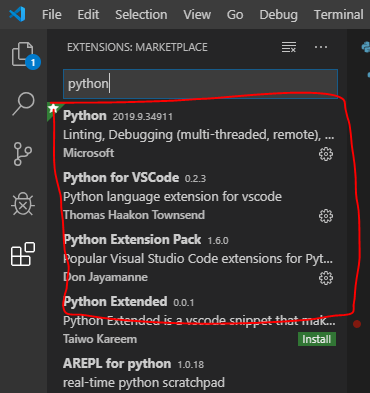

For example, to install anaconda3-4.1.1 in path/to/directory: $ pyenv install anaconda3-4.1.1 This version overrides the global version. python-version file in the current directory. The local command will set local application-specific Python version(s) by writing the version name to a.

Local application-specific Python version This shows an asterisk * next to the currently active version. System (set by /Users/your_account/.pyenv/version) Alternatively, you can run: $ pyenv versions For example, if you prefer 2.7.12 over 3.5.2: $ pyenv global 2.7.12 3.5.2Īll installed Python versions can be located in ~/.pyenv/versions. Use the global command to set global version(s) of Python to be used in all shells. Then install the desired versions: $ pyenv install 2.7.12 To list the all available versions of Python, including Anaconda, Jython, pypy, and stackless, use: $ pyenv install -list Restart your shell so the path changes take effect.


$ echo 'eval "$(pyenv init -)"' > ~/Projects/config/env.sh To upgrade pyenv in the future, use upgrade instead of install.Īfter installing, add pyenv init to your shell to enable shims and autocompletion. First, we must install pyenv using homebrew: $ brew install pyenv Pyenv is a simple Python version manager that can manage and install different versions of Python. Save the file and open a new terminal to take the new $PATH into account (everytime you open a terminal. Let's upgrade them both: $ pip install -upgrade setuptoolsĮxecutable scripts from Python packages you install will be put in /usr/local/share/python, we already had this in the Env.sh file created before. It also installed Pip (and its dependency Setuptools), which is the package manager for Python. Running $ which python should output /usr/local/bin/python. When finished, you should get a summary in the terminal. The following command will install Python 2.7 and any dependencies required (it can take a few minutes to build everything): $ brew install python 2, 3, and anaconda) then you should use pyenv. If you plan to use multiple versions of Python (e.g. There are two ways to install Python, (1) Homebrew and (2) Pyenv. But you don't want to mess with the system Python (some system tools rely on it, etc.), so we'll install our own version(s). OS X, like Linux, ships with Python already installed.


 0 kommentar(er)
0 kommentar(er)
